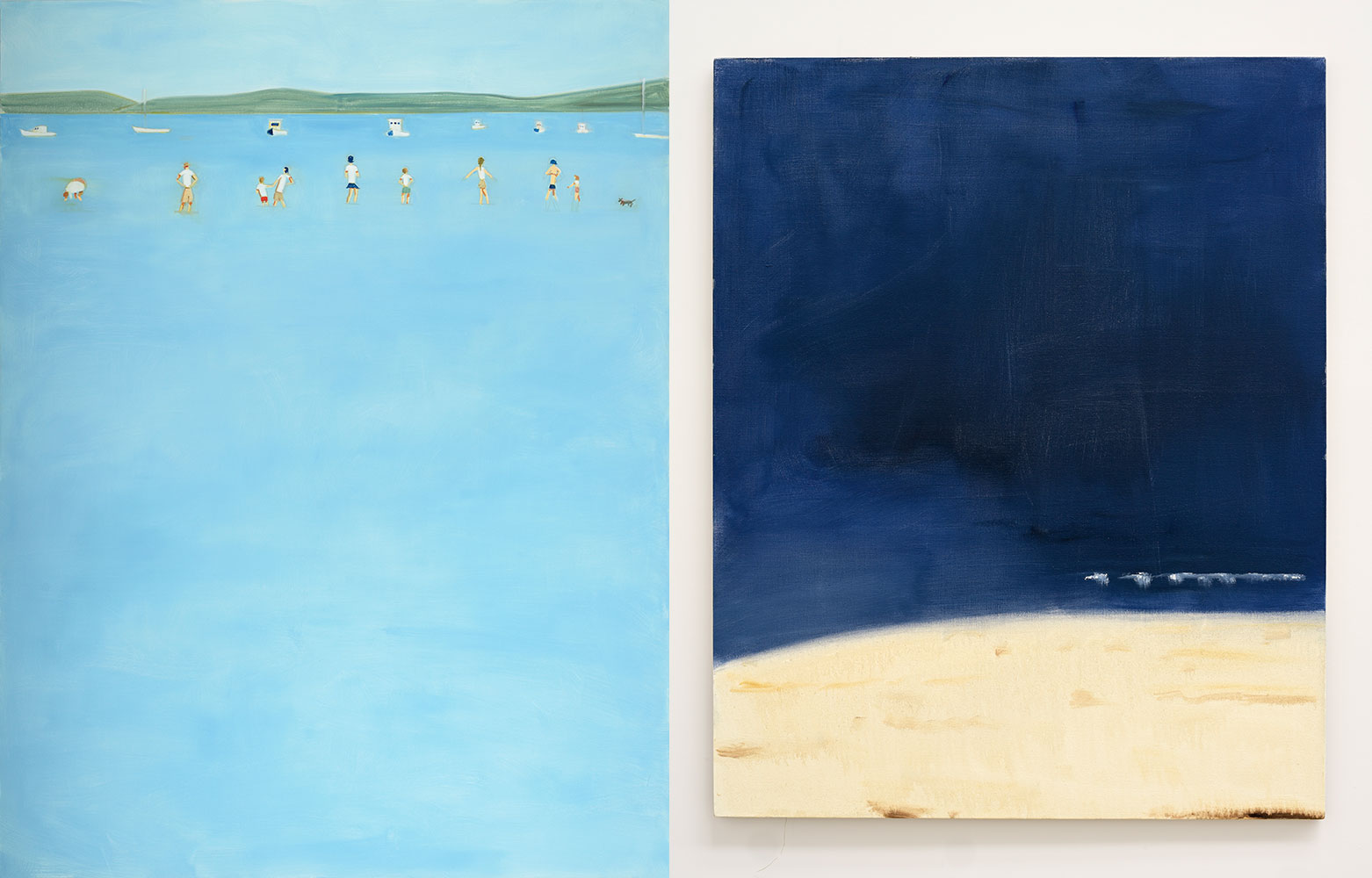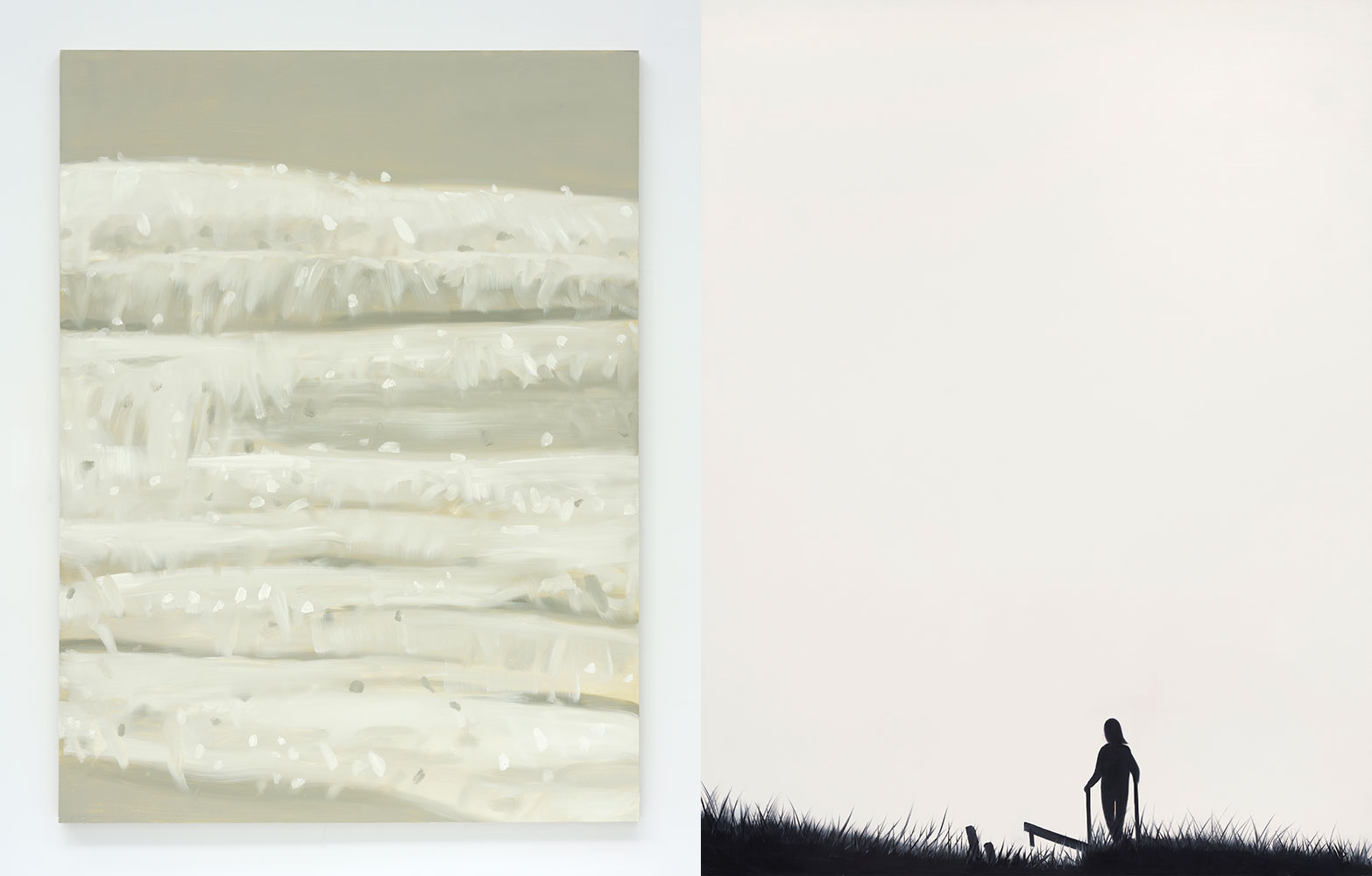ART-PRESENTATION: Alex Katz-Floating Worlds
 Coming of age as an artist in 1950s New York, Alex Katz developed his unique approach to contemporary representational painting at the height of Abstract Expressionism. Over the seven decades since his first exhibition in 1954, he has produced a celebrated body of work, including paintings, drawings, sculpture and prints. He draws inspiration from films, billboard advertising, music, poetry and his close circle of friends and family. Primarily working from life, he produces images in which line and form are expressed through carefully composed strokes and planes of flat color.
Coming of age as an artist in 1950s New York, Alex Katz developed his unique approach to contemporary representational painting at the height of Abstract Expressionism. Over the seven decades since his first exhibition in 1954, he has produced a celebrated body of work, including paintings, drawings, sculpture and prints. He draws inspiration from films, billboard advertising, music, poetry and his close circle of friends and family. Primarily working from life, he produces images in which line and form are expressed through carefully composed strokes and planes of flat color.
By Efi Michalarou
Photo: Thaddaeus Ropac Gallery Archive
Alex Katz in “Floating Worlds” presents an exhibition focused on the theme of water, the works range from seascapes to studies of light and reflections on water, these often monumental paintings challenge the traditional notion of landscape, questioning what is reality and what is illusion. Alex Katz began painting small seaside landscapes in the late 1950s. In these early works, flat patches of colur thwart basic notions of perception, paving the way for pictorial experimentations that he would develop on a larger scale only in the 1990s. The earliest painting in the exhibition, “Black Brook 2” (1989), inaugurates a new body of images, marked by ambiguity. Although equally rooted in reality as his previous paintings, the motif of the brook is abstracted in the work, making it more difficult to decipher than earlier compositions. Often produced during Alex Katz’s summer stays in Maine, these works are part of a tradition of painting, sur le motif, that started with the Impressionists and led to the birth of Modernism. In 2009, he created a series of paintings (two of which are presented in the exhibition) that pays tribute to Claude Monet. Unlike his portraits, these paintings are not made using 1:1 cartoons that he transfers to a primed canvas and punctures with a tool to map the basic outline of the motif on the surface. This method is a modern take on the Renaissance technique of pouncing, which was developed for fresco painting. Instead, the landscapes are almost direct transpositions of preparatory studies to large format. The small oil sketches painted from life reveal an intimate aspect of his practice. For Alex Katz, “a sketch is very direct. It’s an empirical way of working within an idea”. Used mainly in oil paintings, this wet-on-wet technique requires a quick method of working, as the composition must be finished before the first layers have dried. Transposed to a monumental scale, Alex Katz’s affinity for quick execution gives form to a reality that is reduced to its most essential features. In “Floating Worlds”, the subject almost disappears. Here and there characters appear, dotted around the composition like cartoons, but most often the space seems empty. Water is present in all its forms: the breaking water of waves, the flowing water of streams, the stagnant water of ponds and, above all, the water which reflects reality in an inverted, troubled and constantly changing image. Alex Katz follows a long line of modern painters who, starting from a meticulous observation of nature, have embarked on another path.
Photo: Alex Katz, Wave 4, 2000, Oil on linen, 243,8 x 304,8 cm (96 x 120 in), © Alex Katz / Adagp, Paris, 2021, Courtesy Thaddaeus Ropac, London/Paris/Salzburg/Seoul, Photo: Paul Takeuchi
Info: Curator: Eric de Chassey, Thaddaeus Ropac Gallery, 69 avenue du Général Leclerc, Pantin, Paris, France, Duration: 10/9-20/11/2021, Days & Hours: Tue-Sat 10:00-19:00, https://ropac.net





Right: Alex Katz, Small Wave, 2020, Oil on linen, 152,4 x 121,9 cm (60 x 48 in), © Alex Katz / Adagp, Paris, 2021, Courtesy Thaddaeus Ropac London/Paris/Salzburg/Seoul, Photo: Paul Takeuchi


Right: Alex Katz, Black Ada (aka Silhouette 3), 1997, Oil on linen, 320 x 243,8 cm (126 x 96), © Alex Katz / Adagp, Paris, 2021, Courtesy Thaddaeus Ropac London/Paris/Salzburg/Seoul, Photo: Paul Takeuchi

